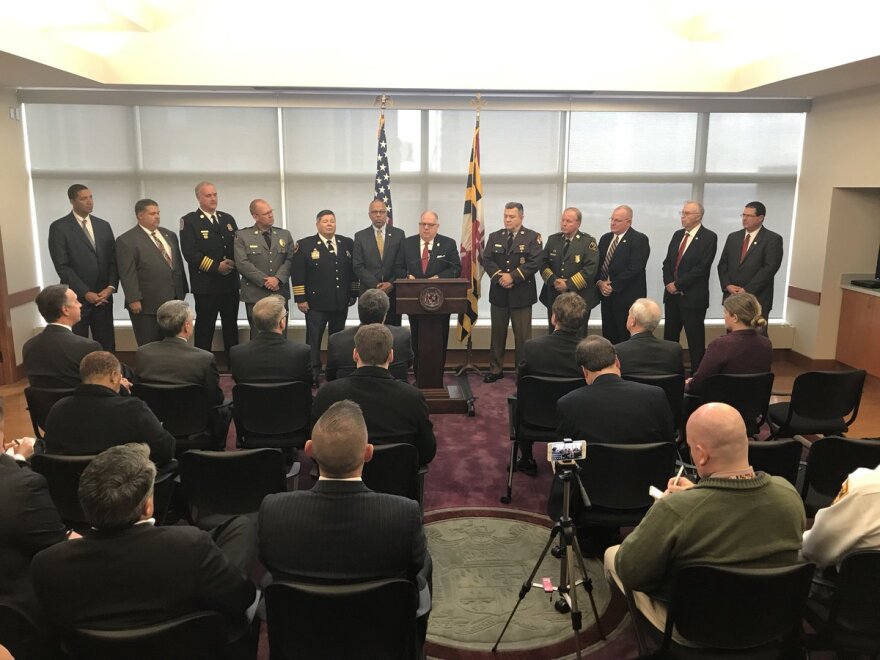Since Governor Larry Hogan has held the Maryland’s highest elected office, Baltimore has seen homicides go through the roof.
In 2015, there were 344 homicides.
2016: 318 homicides. 2017: So far, 323 homicides.
Hogan wants 2018 to show a different story. And for that – he’s got a plan.

Speaking at a press conference on Tuesday, Governor Hogan unrolled a multi-faceted violent crime plan that he hopes will show immediate results and send his message loud and clear.
"I have absolutely no tolerance whatsoever for these repeat violent offenders and these criminal gangs causing lawlessness in our streets," he said. "We need to remove as many as we can as quickly as possible."
Hogan said he plans to deploy officers where needed.
"Effective immediately, the Maryland State Police will assist the Baltimore Police Department and the Baltimore Sheriff's office in serving high priority warrants to identify and focus on the most dangerous and violent of those warrants," he said.
According to city police, 90 percent of homicide victims have criminal records averaging over 11 arrests and 3 convictions.
Hogan said there’s still a need to discuss long-term measures to reduce crime, but he wants to affect public safety now. So, he's sending 200 state parole and probation officers to help Baltimore Police look for violators.
"We have placed these state officers in every single precinct in Baltimore City to work in tandem with Baltimore City officers," he said.
Hogan said he wanted to provide Baltimore’s mayor and police commissioner with any assistance he could. For example, he said the state Department of Housing and Community Development and the Stadium Authority will work with city officials to target – and demolish - blighted houses in high crime neighborhoods.
"We want to give those criminals fewer places to hide," he said.
Hogan, who was surrounded by high ranking criminal justice officials from throughout the state--but none from Baltimore--said some of his crime initiatives would go state wide, pointing to data that showed there were more than 330 drug trafficking organizations in Maryland last year.
"Heroin, fentanyl and carfentanil are out of control and growing across the state," he said.
He announced two initiatives to help law enforcement agencies share information, the Maryland Criminal Intelligence Network and the Governor's Council on gangs and Violent Criminal Networks.
The first would connect agencies throughout the state with federal law enforcement agencies to collaborate and share data and the second, made up of top law enforcement officials throughout Maryland, would make it easier for those agencies to share information.
In addition, the governor said he would send a package of tough on crime bills to the General Assembly when it returns in January.



